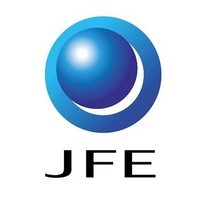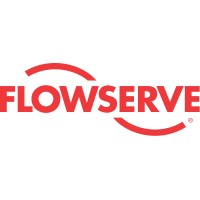Company Cyber Security Posture
NANA
NA Company Details
NA
NA
NA
NA
NA
NA
Scan still pending
NA
NA
Between 200 and 800
This score is AI-generated and less favored by cyber insurers, who prefer the TPRM score.
 NA Global Score
NA Global Score.png)

Company Scoring based on AI Models
| Model Name | Date | Description | Current Score Difference | Score |
|---|---|---|---|---|
| AVERAGE-Industry | 03-12-2025 | This score represents the average cybersecurity rating of companies already scanned within the same industry. It provides a benchmark to compare an individual company's security posture against its industry peers. | N/A | Between 200 and 800 |
Company Cyber Security News & History
| Entity | Type | Severity | Impact | Seen | Url ID | Details | View |
|---|
Company Subsidiaries

NA
Access Data Using Our API

Get company history
.png)
NA Cyber Security News
Cybersecurity jobs available right now: April 1, 2025
As a Cybersecurity Analyst, you will analyze security alerts, correlate events, and determine the severity of potential threats to identify ...
'Mixed picture': Liebherr mining revenue up 15% in 2024
Liebherr's mining segment increased its revenue by 14.7% year-on-year, as revealed in its annual report today (April 2).
Shifting market for STS cranes
Global terminal operators do not believe Chinese-made cranes represent a cybersecurity risk; ZPMC still dominates the market, but not to the ...
A look inside the Chinese cyber threat at the biggest ports in US
When it comes to the threat of Chinese surveillance at U.S. ports, the view of the Biden administration and ports management don't line up.
US moves to shut out Chinese cranes and increase cybersecurity at its ports
The Biden administration has announced four key actions designed to strengthen maritime cybersecurity and support domestic crane production.
Liebherr Mining excels with continuous improvement program
Liebherr Mining excels with continuous improvement program.

NA Similar Companies

GRUNDFOS
We’re a global leader in water solutions. Every day, our intelligent, energy-saving pumps and water solutions help provide comfort, deliver drinking water, remove wastewater or sustain crops all over the world. We want to ensure water is accessible and reliable for all. Since 1945, we’ve proudl

Alfa Laval
Pioneering positive impact! Our pioneering 140-year-old start-up culture is built on the idea that partnership is the key to solving complex problems and unlocking the full potential of resources. So we collaborate closely with our partners, customers, and thought leaders to create game-changing so

TK Elevator
𝗪𝗲𝗹𝗰𝗼𝗺𝗲 𝘁𝗼 𝗧𝗞 𝗘𝗹𝗲𝘃𝗮𝘁𝗼𝗿 – 𝗪𝗵𝗲𝗿𝗲 𝗜𝗻𝗴𝗲𝗻𝘂𝗶𝘁𝘆 𝗘𝗹𝗲𝘃𝗮𝘁𝗲𝘀 𝗨𝗿𝗯𝗮𝗻 𝗟𝗶𝘃𝗶𝗻𝗴 Engineering pioneer. Global industry leader. TK Elevator draws on a legacy of firsts – from a groundbreaking vertical conveyor in 1890 – to evolve modern mobility. TKE blends safety, reliability, and innovation to create cutting-edge s

JFE Steel Corporation
JFE Steel is a steelmaker engaged in the total steel-making process, taking iron ore raw material and turning it into final products. Boasting one of the world's greatest capacities for steel production, JFE Steel satisfies customers by producing steel under a corporate philosophy of "contributing t

Flowserve Corporation
Flowserve is one of the world's largest manufacturers of pumps, valves and seals with over 16,000 employees across 50 countries. Built on more than 50 world-renowned heritage brands, the equity and customer loyalty we have earned over the past 230 years is the foundation of our leadership position a

Rittal GmbH & Co. KG
Rittal is a leading global supplier of enclosure systems, automation and infrastructure with its industrial, IT, energy and power, cooling and service units. Rittal products and solutions are used in over 90% of global industries – standardised, customised, and always of the very best quality. Ou

Frequently Asked Questions
Explore insights on cybersecurity incidents, risk posture, and Rankiteo's assessments.
NA CyberSecurity History Information
How many cyber incidents has NA faced?
Total Incidents: According to Rankiteo, NA has faced 0 incidents in the past.
What types of cybersecurity incidents have occurred at NA?
Incident Types: The types of cybersecurity incidents that have occurred include .
Additional Questions
What Do We Measure?
















Every week, Rankiteo analyzes billions of signals to give organizations a sharper, faster view of emerging risks. With deeper, more actionable intelligence at their fingertips, security teams can outpace threat actors, respond instantly to Zero-Day attacks, and dramatically shrink their risk exposure window.
These are some of the factors we use to calculate the overall score:
Identify exposed access points, detect misconfigured SSL certificates, and uncover vulnerabilities across the network infrastructure.
Gain visibility into the software components used within an organization to detect vulnerabilities, manage risk, and ensure supply chain security.
Monitor and manage all IT assets and their configurations to ensure accurate, real-time visibility across the company's technology environment.
Leverage real-time insights on active threats, malware campaigns, and emerging vulnerabilities to proactively defend against evolving cyberattacks.




